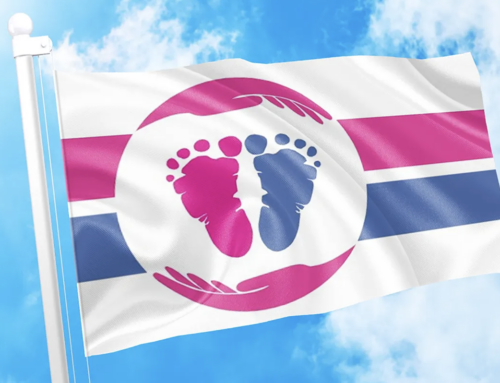Understanding the significance of May 14, 1969
Abortion is not murder.
When a child is killed before birth, even one second before, even if most of the baby has been deliv- ered, abortion is not – legally speaking – murder. To this country’s great shame, there is no law concerning abortion in Canada. It was done away with in 1988. But I’m getting ahead of myself. Canada’s history of infanticide officially begins in 1969 – on May 14th, Canada’s Day of Infamy.
In that month of May when nature is busy giving birth after winter, our politicians began an era of killing infants in the womb. Revisions to the Criminal Code made it possible for a mother to kill her baby anytime before birth without legal consequences.
 Former U.S. presidential advisor Michael Uhlmann calls this “new right” of abortion on demand nothing more than an update of the “barbaric Roman tradition whereby a father could take the lives of his family for any reason at any time.” The old Roman tradition, called paterfamiliashas in modern times become “materfamilias.”
Former U.S. presidential advisor Michael Uhlmann calls this “new right” of abortion on demand nothing more than an update of the “barbaric Roman tradition whereby a father could take the lives of his family for any reason at any time.” The old Roman tradition, called paterfamiliashas in modern times become “materfamilias.”
Today, there are seven ways of doing this right up to the moment when a baby is poised to take his first breath and wail her first cry. All seven methods assume that the child feels no pain. More on that later in this article.
Prior to 1969, abortions were against the law in Canada, period. But in that year, our government enacted Section 287 of the Criminal Code to allow abortion with the approval of a hospital abortion committee. One of the stated goals of the new legislation was to exempt doctors from criminal liability. That could be accomplished if the abortion committee signed a statement saying that “the continuation of the pregnancy of the female person would or would likely endanger (the pregnant woman’s) life or health.” (However, no doctor had ever been charged under the Code with performing an illegal abortion.)
The key word here is “health.”
Because of the broad way in which health” was defined, the legislation provided no safety for a child in the womb. Most doctors did not want the responsibility of deciding which child should live and which should die. They routinely approved abortions using the most liberal interpretations of health possible. Doctors could do this because the legislation itself contained a definition of health that was so broad, an army of abortionists could walk through it. It was patterned after the World Health Organization’s definition that health is “a state of complete physical, mental, emotional and social well-being and not merely the absence of disease.” Using that definition, we can all claim to lack health. Who of us reading this can truly say that we are in a complete state of anything?
In 1967-68, the United Church of Canada said it would also accept socio- economic grounds for abortion. Inadequate housing was given as an example.
The head of the Roman Catholic Church made an insightful remark about today’s attitude toward health at a United Nations conference in February 1998.
Pope John-Paul II correctly observed that today, health means more than just the absence of illness, and often has no reference to moral, spiritual, or religious dimensions. The Pope said, “The quest for health has reached the point that, even in important political documents, motherhood itself is regarded as a burden and illness, thus creating the pretext for the justification of contraception, sterilization and abortion.”
Do you think the Pope overstated the matter? Here’s an example of what he was talking about.
This past July, at a United Nations conference in Rome, an International Criminal court was established. There was an attempt made to include the term “enforced pregnancy” in the final documents. The main goal of including that term was to make international law conform to the pro-abortion lobby’s effort to establish unrestricted access to abortion worldwide while ignoring national legislation.
The definition of enforced pregnancy was drawn from the 1996 article, “Advancing Reproductive Rights Beyond Cairo and Beijing.” It provided an interpretation that meant a country would be in violation of international law if it lacked liberal abortion laws – in other words, laws permitting abortion. Pro-life delegates, including those from Canada’s Campaign Life Coalition and REAL Women succeeded in having a narrower definition of the term written into the final agreement – the qualification that the term “shall not in any way be interpreted as affecting national laws relating to pregnancy.”
It should be clear by now that since that infamous day on May 14, 1969, being in a mother’s womb is a most dangerous place for a baby to be.
When Section 287 of the Criminal Code was being debated in Parliament in the late 1960s, it was generally assumed that the unborn child would be killed very early during pregnancy. This soothed consciences because there was doubt among the uninformed about when a fetus becomes human. (You 40-somethings, remember the it’s-just-a-blob-of-tissue justification for abortion?)
For example, Rev. W. Clarke MacDonald, chairman of the United Church’s Board of Evangelism, explained at a parliamentary committee hearing that in the opinion of the United Church, “there is an accruing value (of life) from the time of conception.” The Board offered no opinion as to when the developing child assumed its humanity. And, as Fr. Alphonse de Valk pointed out in his book Morality And Law In Canadian Politics, “No one inquired about the nature of this (accruing) value, or by what standard it was judged to be ‘accruing’ and whether it continued to accrue throughout life or whether a decreasing value was envisaged for those growing older and feebler.”
When the changes to the Criminal Code became law in 1969, the Globe and Mailnewspaper featured an editorial entitled, “It Was A Great Day.” The paper went on to describe the changes to the abortion laws as “an important moment in Canadian history,” and added that the law now conformed to the view of the majority of Canadians.
The problem with that editorial was that there was no hard evidence to suggest the majority of Canadians wanted to be able to kill pre-born babies. However, it would have been correct to say that the new law conformed to the opinion of a majority of editorialists. A review of the editorial pages of the time shows that most of Canada’s major newspapers were in favour of liberalizing the country’s abortion laws. It appears that they mistook the echo of their own voices for the sound of public opinion.
Even after the law was changed to make it easier to get an abortion, calls continued for even easier access.
They got what they wanted in 1988. That’s when Canada’s Supreme Court “justices” struck down the 1969 amended abortion law in Regina vs. Morgentaler. There has been no law in Canada to protect the pre-born since then.
The Supreme Court ruled that Section 287 of the Criminal Code offended Section 7 of the Charter of Rights and Freedoms and that the law was therefore of no force or effect. “Forcing a woman by threat of criminal sanction to carry a fetus to term unless she meets certain criteria unrelated to her own priorities and aspirations, is a profound interference with a woman’s body and thus a violation of her security of the person,” wrote then-Chief Justice Brian Dickson.
Before that decision, freestanding abortion facilities operated only in Quebec. Today, there are abortuaries in the two territories and all provinces except Prince Edward Island.
After the 1969 amendments to the Criminal Code, the only defence left for the pre-born was the Charter of Rights and Freedoms. The Charter in Chapter Seven says, “Everyone has the right to life, liberty and security of the person, and the right not to be deprived thereof except in accordance with the principles of fundamental justice.”
The issue of the rights of the pre-born reached the Supreme Court in 1989, when a Quebec man succeeded in getting an injunction from a provincial court to prevent his former partner for aborting her baby. However, on appeal, the court sidestepped the question of fetal rights under the Charter by deciding that the fetus was not a person under Quebec’s Civil Code.
The court appears to have deferred to Henry Morgentaler’s definition of when human life begins.
In a letter to Archbishop Francis J. Spence, president of the Canadian Conference of Catholic Bishops, Morgentaler wrote, “To pretend that an abortion kills a pre-born baby is absurd, since women certainly do not want to kill their babies. All they want is the removal of an embryo or fetus from their uterus so it (will) not become a baby.”
For more on the legal aftermath of the 1969 abortion law, see part II of this article in the next issue of The Interim.



